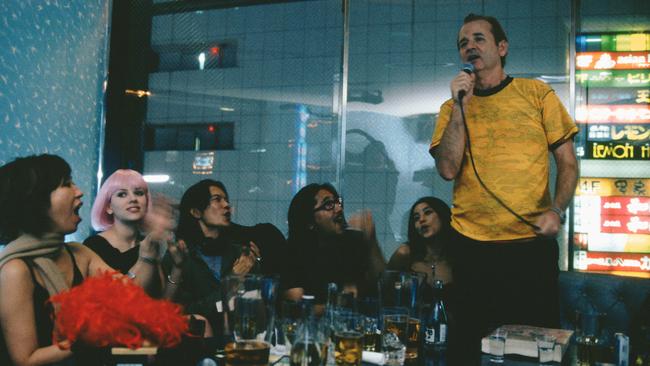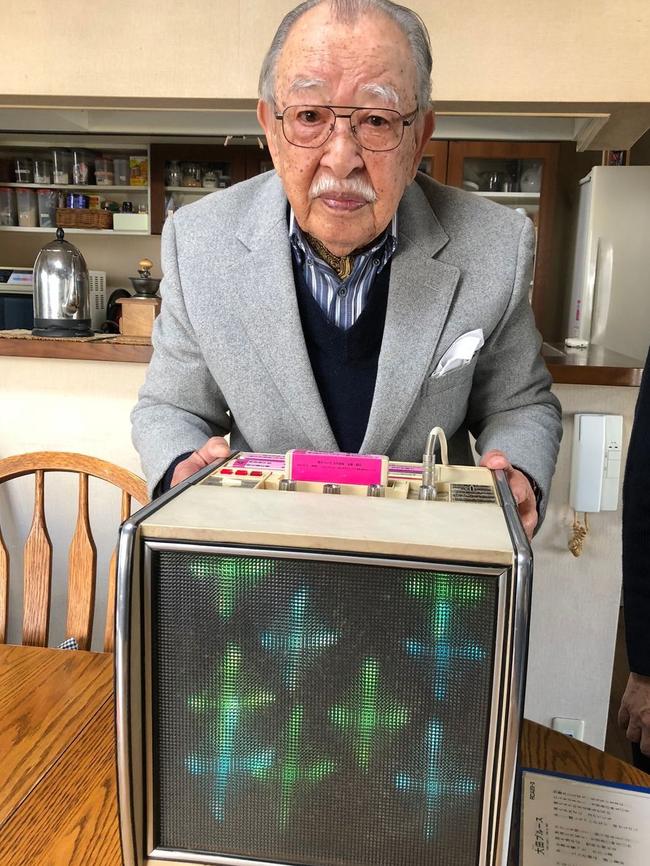Karaoke inventor Shigeichi Negishi loved to perform
Japanese electrical engineer Shigeichi Negishi, who loved to sing along to instrumental tracks broadcast on radio, called his invention the Sparko Box at first.

OBITUARY
Shigeichi Negishi, electrical engineer and inventor.
Born Tokyo, November 29, 1923; died Tokyo, January 26, 2024, aged 100
Shigeichi Negishi often started the day at his Nichiden Kogyo electronics factory in Japan singing along to the instrumental tracks broadcast on radio show Pop Songs Without Lyrics. On one occasion in 1967, he was overheard crooning by his chief engineer, who teased the boss about his lack of talent.
His pride may have been wounded but it gave him an idea: what if his voice could be heard accompanied by a professional backing track? Would that improve the perception of his singing? “I asked the engineer, ‘can we hook a microphone up to one of these tape decks so I can hear myself singing over a recording of the program?’,” he told Matt Alt, the author of Pure Invention: How Japan Made the Modern World. “Piece of cake, boss,” came the reply.
Three days later the engineer presented Negishi with a contraption hooked up to loudspeakers that, according to Alt, “looked like something off a mad scientist’s laboratory bench”. Negishi turned it on and slotted in an instrumental tape of Mujo no Yume (The Heartless Dream), an old Japanese favourite from the ’30s by Yoshio Kodama. He started singing and through the speakers came his voice accompanied by the recording.
Negishi had sung the world’s first karaoke song and, in doing so, unwittingly unleashed a phenomenon that has since blighted wedding receptions and office parties the world over as the tone-deaf and stone drunk mangle their favourite songs. “It works! That’s all I was thinking,” Negishi said. “I knew right away I’d discovered something new.” He asked his engineer to build a case and to wire in a coin timer he had lying around.
By the time they were finished, the contraption was a cube measuring about 50cm on each side, edged with chrome and completed with a beige, Formica-like material. On the top was a rectangular opening for a tape and knobs for controlling volume and balance, all flanked by a microphone and a 100-yen coin slot that would allow about 10 minutes of music.
Negishi called it the Sparko Box, a name that came from another of his innovations, a front panel made of translucent plastic hiding a constellation of multi-coloured lights that flashed in time with the music. He took the device home to show to his wife and three children, who each took turns singing along to the tape. Thus the world’s first karaoke party was held in their family kitchen.

Pleased with the reaction, Negishi began to manufacture Sparko Boxes and print books containing words to the songs. He also approached a friend at NHK, the national television station, asking if he could supply as many as possible of the instrumental music tapes used on Pop Songs Without Lyrics. “He said, ‘Karaoke, you want karaoke tapes’. That was the first time I’d heard the word. It was an industry term, you see,” Negishi said, explaining that when a singer performed in rural areas they would use a tape instead of an orchestra, leaving the orchestra pit “empty”. “That’s what karaoke means,” he added.
Employees of the big electronics manufacturers soon discovered the devices and their corporations realised that the concept was essentially in the public domain. JVC was the first big company to get a machine to market in 1972, followed by Toshiba and Pioneer. Many were bought for private use rather than for clubs and bars and, in 1981, Japanese manufacturers sold about 700,000 units, trebling their previous year’s sales.
So frenetic had the craze become in Japan that some taxis were even fitted with karaoke machines. On December 26, 1977, a brawl broke out among 18 employees of a Kawasaki brothel over whose turn it was to sing next, and four of them wound up in hospital, the first recorded victims of “karaoke rage”. No fewer than half a dozen singers in The Philippines have been murdered over their renditions of Sinatra’s My Way.
When karaoke reached Britain, following in the wake of the Sony Walkman, some watched its arrival with horror. “If the television killed off the art of conversation, the karaoke has piled earth on the grave,” The Guardian warned in 1982.
Shigeichi Negishi was born in Tokyo in 1923, almost three months after the city was devastated by the Great Kanto earthquake and tsunami that killed more than 100,000 people. His father was an official who managed local government elections and his mother ran a tobacco store.
He studied economics at Hosei University, Tokyo, and during World War II was conscripted into the Japanese Army. After the country’s defeat he spent two years in a prison camp and on his release became a salesman for Olympus cameras.
In 1956 Negishi branched out on his own, setting up Nichiden Kogyo to assemble electronic goods such as transistor radios for giants such as Panasonic and Sony. The factory was next door to his home in Itabashi City, a sleepy mixed residential-industrial area on the northwestern outskirts of Tokyo that, despite being the home of karaoke, had little in the way of nightlife.
Negishi was an inveterate tinkerer who held patents for everything from factory-line conveyor belts to foldable speakers. He even developed “marking rounds”, designed to be hurled at robbers to stain them with dye, and for a while dabbled in merchandising for manga characters. By the time he created the Sparko Box he employed about 80 technicians and engineers, many of whom were involved in developing eight-track car stereos for a leading audio company.
In 2018, back in his kitchen in a Tokyo suburb, Negishi showed his interviewer an original Sparko Box, thought to be the last remaining in the world and still working after more than half a century.
Negishi’s wife predeceased him and he is survived by their three children.
The Times





